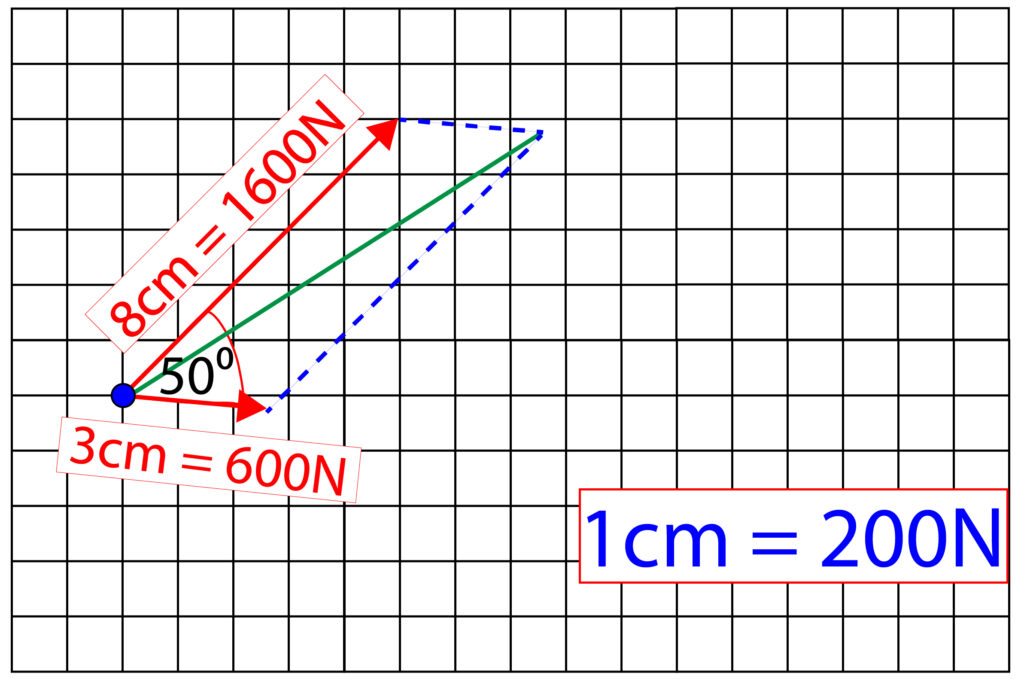Answers to AQA GCSE Finding the resultant force, using the parallelogram rule(Physics)
Practice Questions
1.State what the parallelogram rule is used for
We can use the parallelogram rule to find the resultant force of two forces that do not act along the same line.
2. A golf ball has a forward force in an easterly direction of 400N. Whilst the golf ball is moving, a cross wind in a southerly direction of 150N acts on the golf ball. Using the parallelogram rule draw a diagram to show this and calculate the resultant force.
On the diagram below, the forward force 400N was 8cm long. This means that 1cm = 50N.

The purple line is approx 8.5cm, this is 430N.
3. Two tug boats pull a larger boat forwards. The first tug boat uses a force of 1600N, whilst the second uses a force of 600N. The angle between the tug boats is 50 Degrees. Draw a scale diagram to show this and using the parallelogram rule, calculate the resultant force.
A diagram has been placed below to help you visualise question 3.

The answer is below

Complete your parallelogram, then measure the resultant force line, apply the scale factor of 1cm = 200N
The length of the resultant line is approx 10.2cm and the resultant force is approx 2040N
Absorption and Emission of EM Radiation
JJ Thomson and Plum pudding model
Ernest Rutherford and the Nuclear Model
Niels Bohr changing the Nuclear Model
Discovering the Proton and Neutron
Measuring radiation from radioactivity
Radiation types and properties
Random nature of radioactive decay
Radioactive contamination or irradiation
Hazards of contamination and irradiation
Studies on the effects of radiation on humans
Different half lives of radioactive isotopes
Nuclear Fission Chain Reaction
Writing nuclear fission equations
Drawing ray diagrams for a concave lens
Drawing Ray Diagram to produce a virtual image for a convex lens
Drawing ray diagram to produce a real image for a convex lens.
Specular and Diffuse Reflection
Seeing Coloured Objects Part 2
Viewing objects through coloured filters
Transparent, Translucent and Opaque